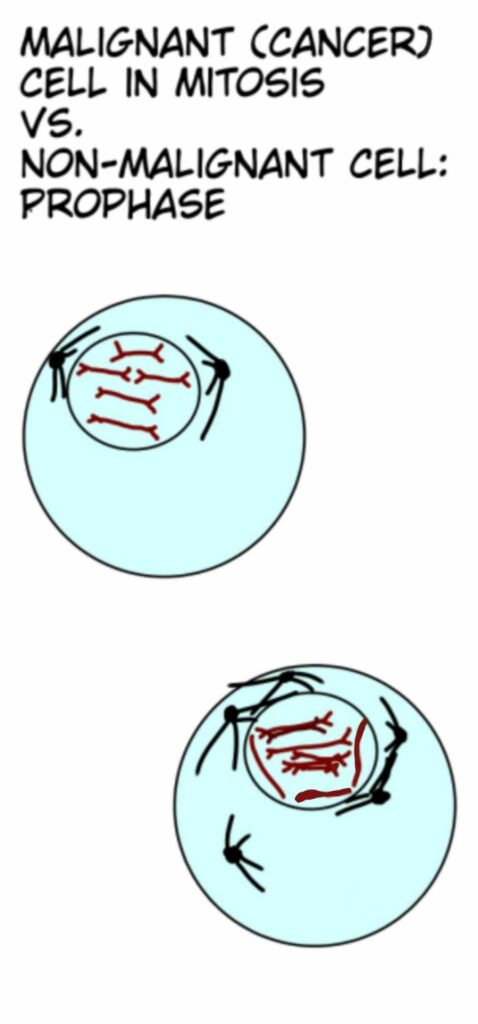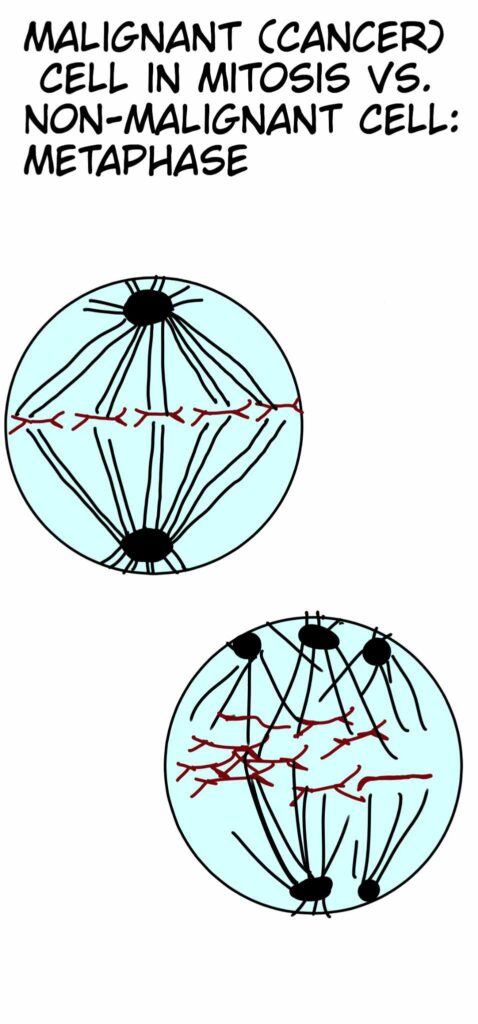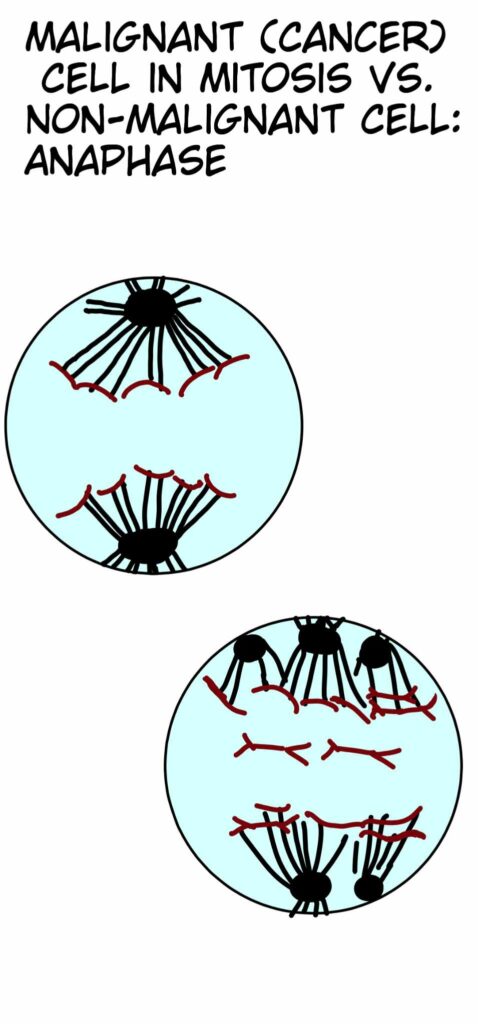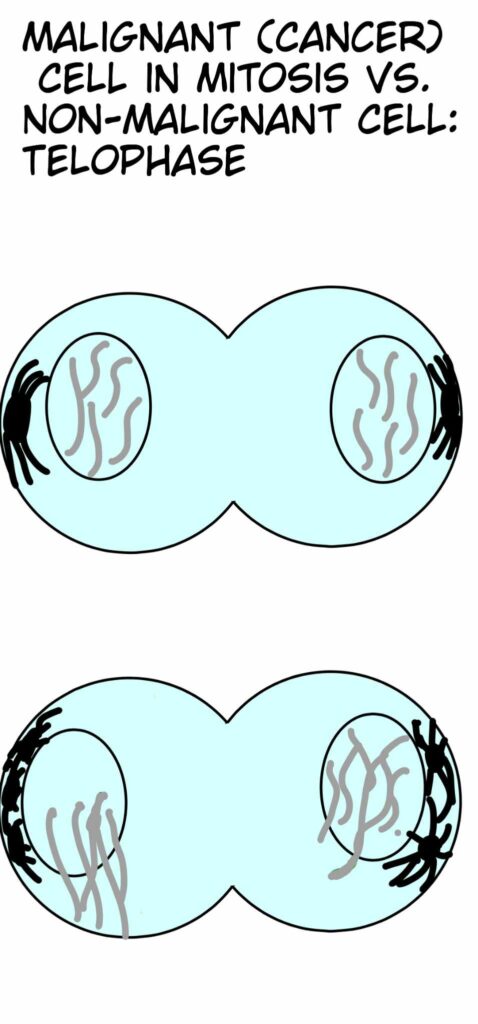



Mitosis in Cancer Cells
Cheyenne Friedersdorff
Department of Biology and Wildlife, University of Alaska
BIOL 111X: Human Anatomy and Physiology
Professor Don Larson
June 23, 2023
The cell cycle is an interesting subject to broach. The different stages of mitosis and how the cell reproduces and forms new cells has caught my attention in class. It is an impressive subject to me because it shows me that on a cellular level, our bodies are constantly working.
But what happens when something goes wrong? This interested me, because the first thing I could think of was cancer since it runs in my family.
Usually, our bodies will kill it off and continue to make new, healthy cells. But sometimes those cells will fly under the radar. That is where we get Malignant (or cancer) cells.
I have put together a series of digital drawings showing the different stages of a healthy mitosis (prophase, metaphase, anaphase, and telophase) cycle (top), and a cancer filled mitosis cycle (bottom). Since cytokinesis isn’t technically a mitosis stage, I have not included it, but it also looks different. I haven’t seen anything comparing or contrasting the looks of normal mitosis cells and cancer cells, so I wanted to create a simple illistration that would show the differences!
Right away, we can see that the two different cells in each image look very different. In the first stage, prophase, for example, we can see there are centrosomes, more than there are supposed to be, and the chromatids and sister chromatids don’t look quite right.
These cancer cells (bottom of each new picture) do not die. They continue to reproduce and make new cancer cells-which is why they create things like tumors.
Gene mutations cause cancer cells. There are many reasons for this to occur, but the mutation is what is important. It ignores the rules-as mentioned above, cancer cells do not die and rapidly reproduce. Cancer cells also can act different by not maturing into cells with jobs, ignore the body’s signals, spread through other parts of the body, and damage tissues or organs. This odd behavior is the beginning of this cycle. It will continue through the mitosis cycle, but it look and behave oddly and disrupt the body.
Throughout each phase we can see that a normal cell is much more organized. In the cancer cells, there are too many mitotic spindles, disrupting the formation of the cell. The sister chromatids are also disorganized. In anaphase we can even see a couple of them didn’t get pulled to a side, and in telophase we can see that the chromatin isn’t where it needs to be.
The differences in the cells are very interesting to me. They go through the same process, and yet the steps and the outcome are very different, evem if both in the next stage lead to the formation of two new cells.
I focused on the different stages of mitosis, but my sources talked a lot about different treatments. Hopefully, these treatments will be adjusted so they can work and attack the cancer cells right as they are in the early stages of reproducing.
References
Aneja, R., Vangapandu, S. N., Lopus, M., Viswesarappa, V. G., Dhiman, N., Verma, A. K., Chandra, R., Panda, D., & Joshi, H. C. (2006). Synthesis of microtubule-interfering halogenated noscapine analogs that perturb mitosis in cancer cells followed by cell death. Biochemical Pharmacology, 72(4), 415–426. https://doi.org/10.1016/j.bcp.2006.05.004
Dominguez-Brauer, C., Thu, Kelsie L., Mason, Jacqueline M., Blaser, H., Bray, Mark R., & Mak, Tak W. (2015). Targeting Mitosis in Cancer: Emerging Strategies. Molecular Cell, 60(4), 524–536. https://doi.org/10.1016/j.molcel.2015.11.006
Lee, S. (2015). How cancer starts, grows and spreads. Canadian Cancer Society. https://cancer.ca/en/cancer-information/what-is-cancer/how-cancer-starts-grows-and-spreads#:~:text=Cancer%20cells%20have%20gene%20mutations
